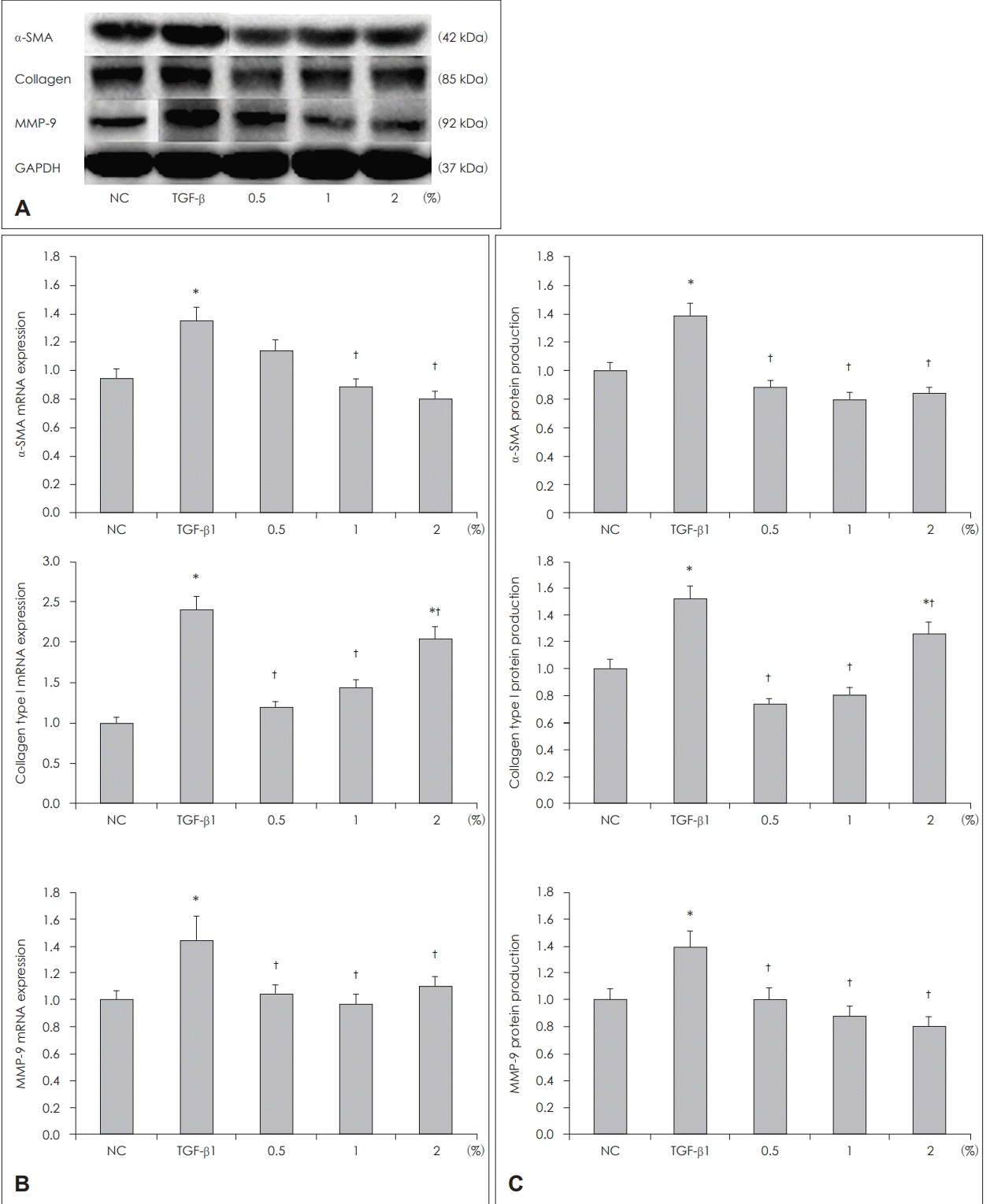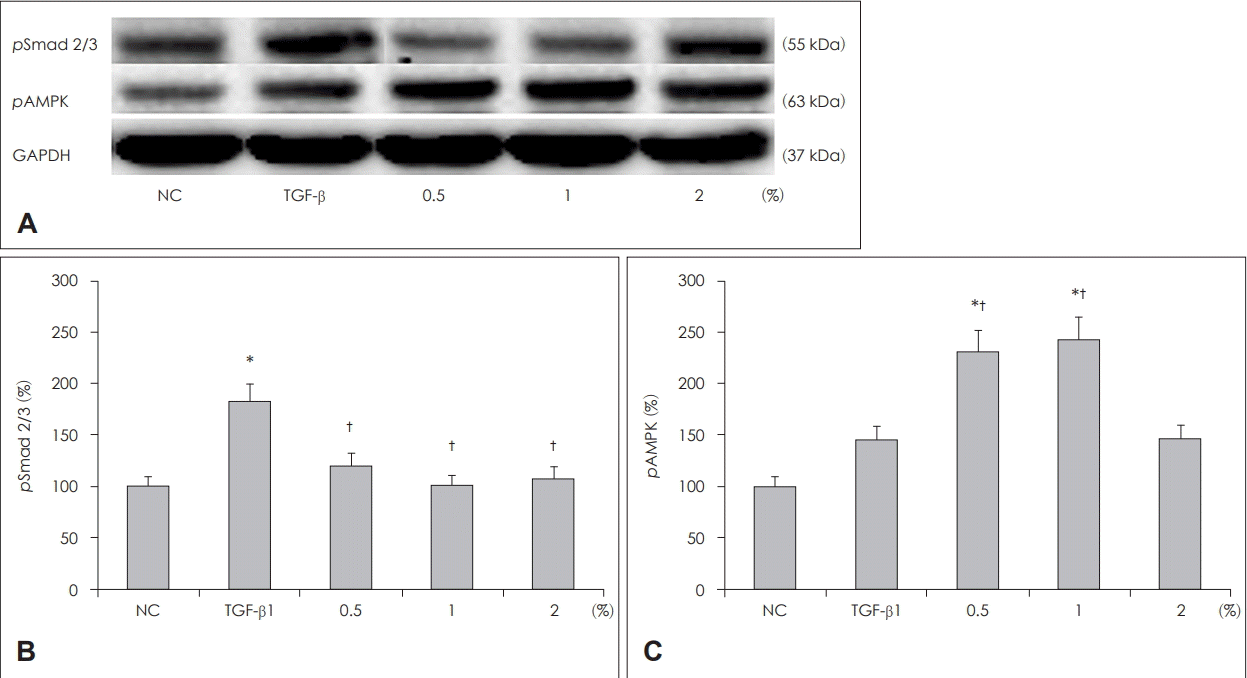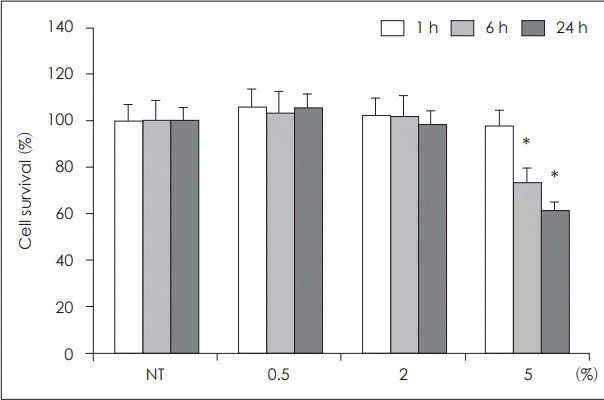1. Stevens WW, Lee RJ, Schleimer RP, Cohen NA. Chronic rhinosinusitis pathogenesis. J Allergy Clin Immunol. 2015; 136(6):1442–53.

2. Lechapt-Zalcman E, Coste A, d’Ortho MP, Frisdal E, Harf A, Lafuma C, et al. Increased expression of matrix metalloproteinase-9 in nasal polyps. J Pathol. 2001; 193(2):233–41.

3. Watelet JB, Bachert C, Claeys C, Van Cauwenberge P. Matrix metalloproteinases MMP-7, MMP-9 and their tissue inhibitor TIMP-1: Expression in chronic sinusitis vs nasal polyposis. Allergy. 2004; 59(1):54–60.

4. Wang QP, Escudier E, Roudot-Thoraval F, Abd-Al Samad I, Peynegre R, Coste A. Myofibroblast accumulation induced by transforming growth factor-beta is involved in the pathogenesis of nasal polyps. Laryngoscope. 1997; 107(7):926–31.
5. Nonaka M, Pawankar R, Fukumoto A, Ogihara N, Sakanushi A, Yagi T. Induction of eotaxin production by interleukin-4, interleukin-13 and lipopolysaccharide by nasal fibroblasts. Clin Exp Allergy. 2004; 34(5):804–11.

6. Patton T, Barrett J, Brennan J, Moran N. Use of a spectrophotometric bioassay for determination of microbial sensitivity to manuka honey. J Microbiol Methods. 2006; 64(1):84–95.

7. Al-Waili N, Salom K, Al-Ghamdi AA. Honey for wound healing, ulcers, and burns: data supporting its use in clinical practice. ScientificWorldJournal. 2011; 11:766–87.

8. Majtan J, Majtan V. Is manuka honey the best type of honey for wound care? J Hosp Infect. 2010; 74(3):305–6.

9. Leong AG, Herst PM, Harper JL. Indigenous New Zealand honeys exhibit multiple anti-inflammatory activities. Innate Immun. 2012; 18(3):459–66.

10. Jervis-Bardy J, Foreman A, Bray S, Tan L, Wormald PJ. Methylglyoxalinfused honey mimics the anti-Staphylococcus aureus biofilm activity of manuka honey: Potential implication in chronic rhinosinusitis. Laryngoscope. 2011; 121(5):1104–7.
11. Ranzato E, Martinotti S, Burlando B. Honey exposure stimulates wound repair of human dermal fibroblasts. Burns Trauma. 2013; 1(1):32–8.

12. Tokunaga T, Sakashita M, Haruna T, Asaka D, Takeno S, Ikeda H, et al. Novel scoring system and algorithm for classifying chronic rhinosinusitis: The JESREC Study. Allergy. 2015; 70(8):995–1003.
13. Fokkens WJ, Lund VJ, Mullol J, Bachert C, Alobid I, Baroody F, et al. EPOS 2012: European position paper on rhinosinusitis and nasal polyps 2012. A summary for otorhinolaryngologists. Rhinology. 2012; 50(1):1–12.

14. Cho JS, Moon YM, Park IH, Um JY, Moon JH, Park SJ, et al. Epigenetic regulation of myofibroblast differentiation and extracellular matrix production in nasal polyp-derived fibroblasts. Clin Exp Allergy. 2012; 42(6):872–82.

15. Mavric E, Wittmann S, Barth G, Henle T. Identification and quantification of methylglyoxal as the dominant antibacterial constituent of Manuka (Leptospermum scoparium) honeys from New Zealand. Mol Nutr Food Res. 2008; 52(4):483–9.
16. Alandejani T, Marsan J, Ferris W, Slinger R, Chan F. Effectiveness of honey on Staphylococcus aureus and Pseudomonas aeruginosa biofilms. Otolaryngol Head Neck Surg. 2009; 141(1):114–8.

17. Lee HM, Kang HJ, Park HH, Hong SC, Kim JK, Cho JH. Effect of peroxisome proliferator-activated receptor gamma agonists on myofibroblast differentiation and collagen production in nasal polypderived fibroblasts. Ann Otol Rhinol Laryngol. 2009; 118(10):721–7.

18. Haruna S, Nakanishi M, Otori N, Moriyama H. Histopathological features of nasal polyps with asthma association: An immunohistochemical study. Am J Rhinol. 2004; 18(3):165–72.

19. Luo X, Deng L, Lamsal LP, Xu W, Xiang C, Cheng L. AMP-activated protein kinase alleviates extracellular matrix accumulation in high glucose-induced renal fibroblasts through mTOR signaling pathway. Cell Physiol Biochem. 2015; 35(1):191–200.

20. Park IH, Um JY, Hong SM, Cho JS, Lee SH, Lee SH, et al. Metformin reduces TGF-β1-induced extracellular matrix production in nasal polyp-derived fibroblasts. Otolaryngol Head Neck Surg. 2014; 150(1):148–53.

21. Lee VS, Humphreys IM, Purcell PL, Davis GE. Manuka honey sinus irrigation for the treatment of chronic rhinosinusitis: A randomized controlled trial. Int Forum Allergy Rhinol. 2017; 7(4):365–72.







 PDF
PDF Citation
Citation Print
Print




 XML Download
XML Download